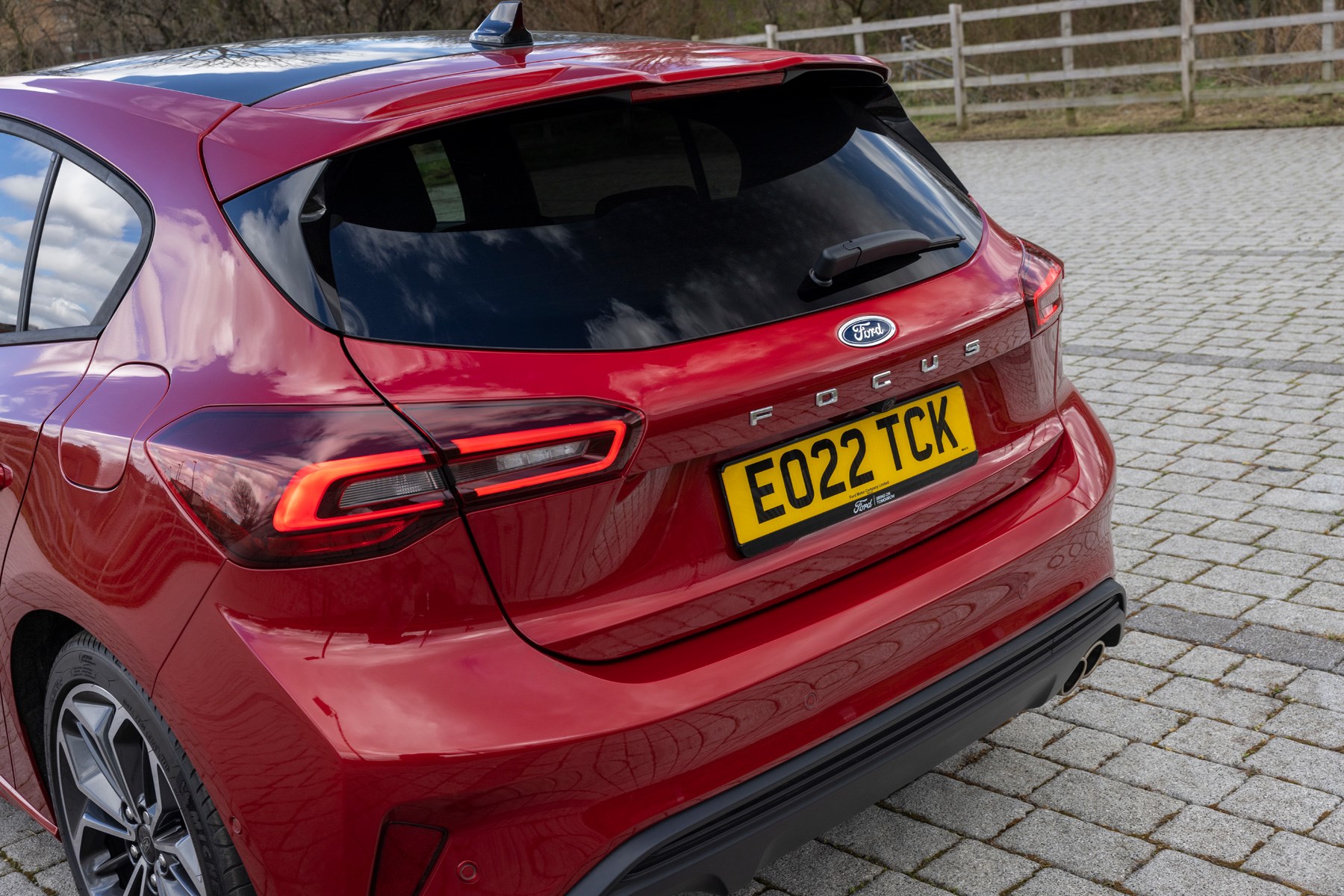► Facelift brings sharper styling and new tech
► Still one of the best hatchbacks to drive
► Rivals offer more electrification options
The first-generation Ford Focus took the family hatchback market by storm when it was launched in the late nineties, offering a good mix of performance, practicality and style. But, because the recipe was so successful, almost every other manufacturer has since tried to replicate it – and now, the current Focus has a fight to keep its nose ahead of its rivals.
The family hatchback market has moved on in the past four years – now, there are plenty of talented alternatives available. For example, the Mazda 3 is arguably better to drive, the Skoda Octavia is more spacious and the Toyota Corolla is more economical.
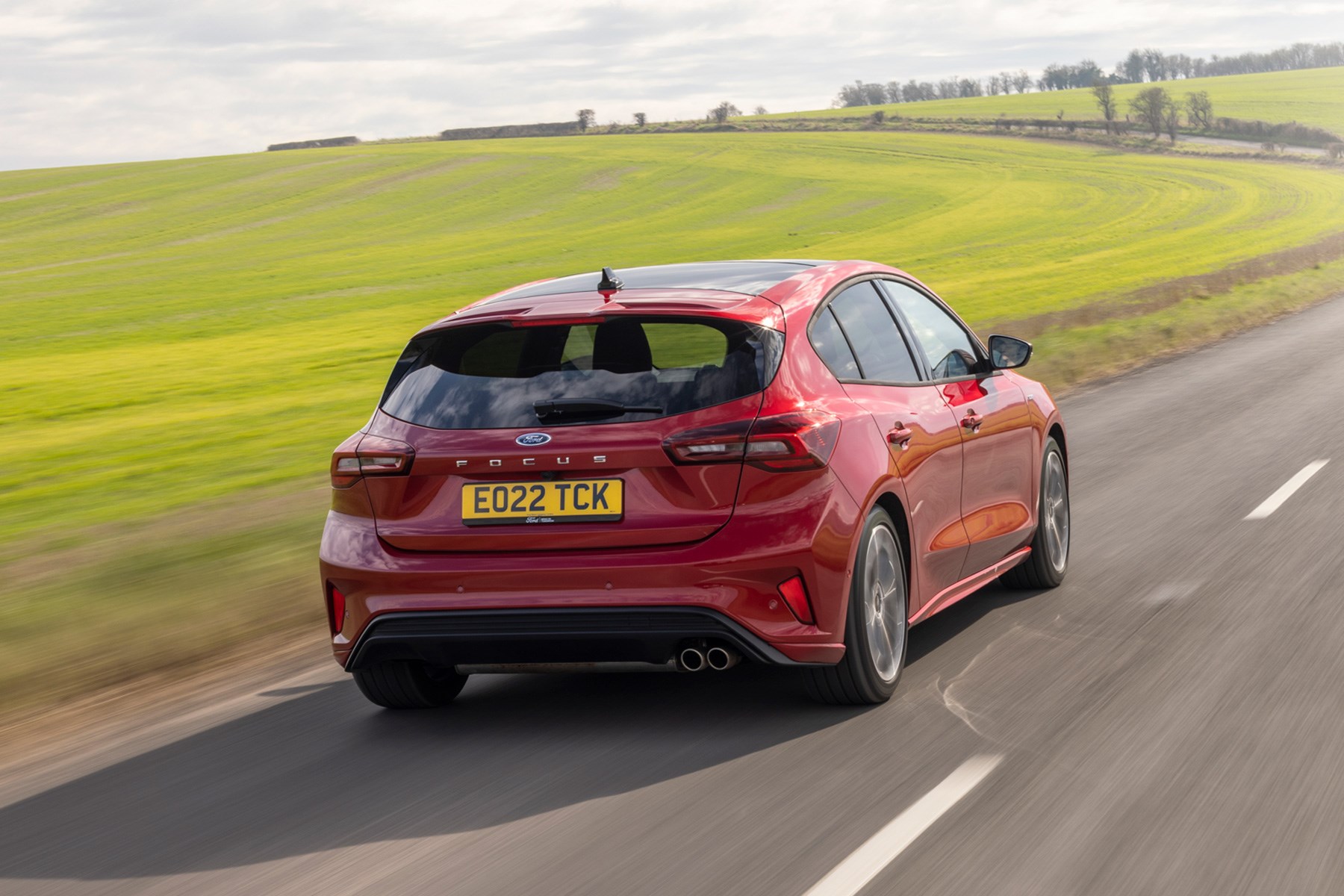
If you want a good all-rounder, there’s either the Hyundai i30 or the Kia Ceed – and if you go for the latter option, you’ll end up with one of the best new car warranties on the market. Ford’s oldest sparring partner, Vauxhall, has also knocked it for six with the new Astra.
The pack is catching up to the Focus, so this facelift has arrived at a good time. And while the update has fixed some of the hatchback’s foibles, it hasn’t addressed the electrification issue. Unlike a lot of the cars in this class, the Focus still isn’t available with a plug-in hybrid powertrain, which makes it a less appealing prospect for company car buyers.
What’s new for the facelift, then?
The usual facelift stuff. There’s a fresh front bumper, new LED headlights and a redesigned grille which now features a Ford badge in its centre, pulling the Focus’s styling into step with that of the recently updated Fiesta supermini.
In the cabin, there’s a new 13.2-inch infotainment system, which runs on the same SYNC 4 software as the system fitted to the pure-electric Mustang Mach-E. The graphics are sharp, the screen is responsive and you get handy technology such as wireless Apple CarPlay and Android Auto thrown in as part of the package.
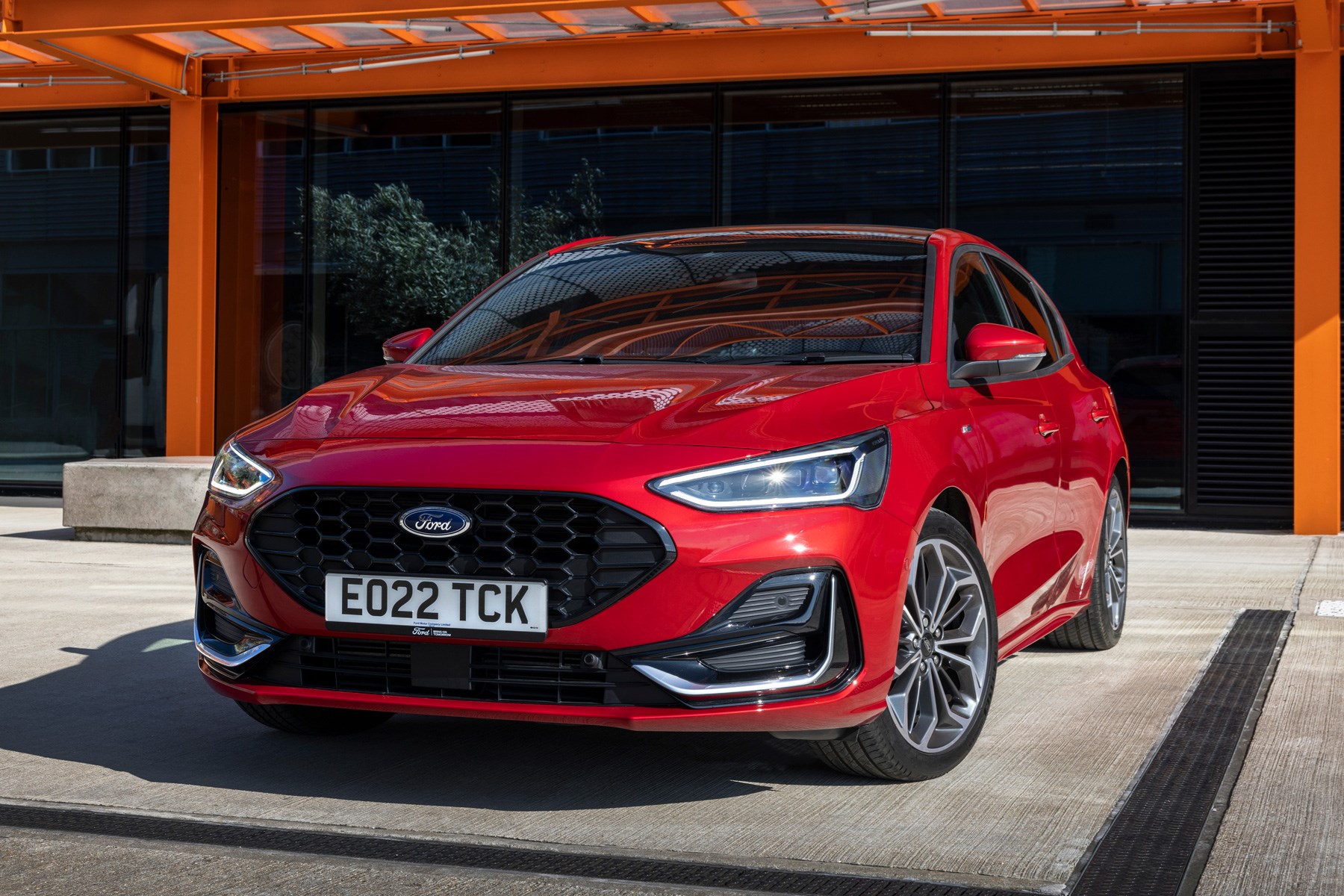
Ford has also moved the climate controls from a physical panel on the centre console to a menu on the touchscreen, which is usually a cause for concern. However, the Focus’s system is one of the better ones, as it’s always accessible from a thin menu at the bottom of the screen.
Any new engines as part of the facelift?
Nope. Buyers have the same choice of engines as before. The petrol range opens with a non-electrically assisted 123bhp turbocharged 1.0-litre three-cylinder unit – although the same engine is available with a mild-hybrid system. Electrically assisted versions of the unit have either 123bhp or 153bhp.
The petrol engines are all impressively punchy for their displacement, but we’d recommend you opt for the more potent 153bhp unit. It produces 140lb/ft of torque, so you need to spin the engine quickly to make progress – but that’s not so bad, as you’ll be working the Focus’s excellent six-speed manual gearbox regularly to keep the engine in its sweet spot.
The 123bhp versions of Ford’s 1.0-litre petrol engine have just 125lb/ft of torque – and those versions of the Focus feel a little breathless once you’ve loaded in a few passengers and some luggage. But the same can be said of most entry-level engines in the family hatch class. Stringent emissions standards are to blame here rather than Ford.
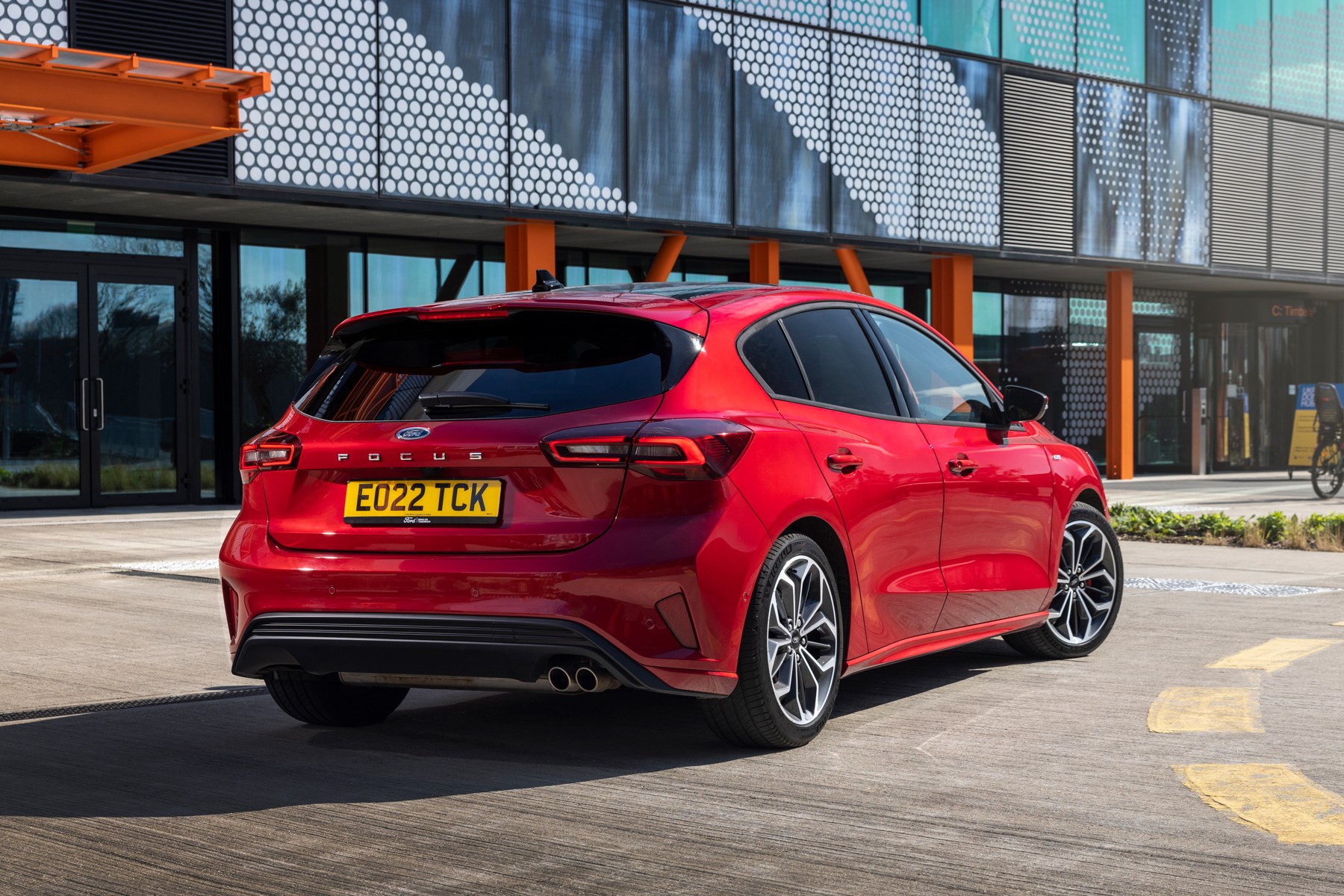
However, Ford could have mitigated some of these performance issues with a full hybrid or plug-in hybrid powertrain. The Focus and the Kuga share the same underpinnings, so there isn’t any real reason (other than a decrease in boot space) why Ford couldn’t bolt the SUV’s 2.5-litre PHEV system into the hatchback’s platform and broaden its customer base.
Instead of embracing electrification, Ford is clinging on to diesel power. There’s just one option available – a 118bhp 1.5-litre four-cylinder unit – which the company says will return 56.5mpg. It’s a mediocre unit, with flat off-boost performance and average refinement. It’s there as a gesture for those covering huge miles, but it’s not the priority it once was.
What’s the handling like?
It’s still good. When the Mk4 Focus was launched in 2018, Ford proudly told us that its chassis was around 20 percent more rigid than the Mk3 model’s – and that benefited handling and refinement. The wheelbase is also slightly longer, which means the car is more stable at speed and it irons out bumps better.
Naturally, none of this has changed for the facelifted model. It also retains the same steering system, which is well-weighted and precise. There’s a little more feedback here than you get in either the Hyundai i30 or the Kia Ceed, which makes the Focus more fun to drive and easier to place on the road.
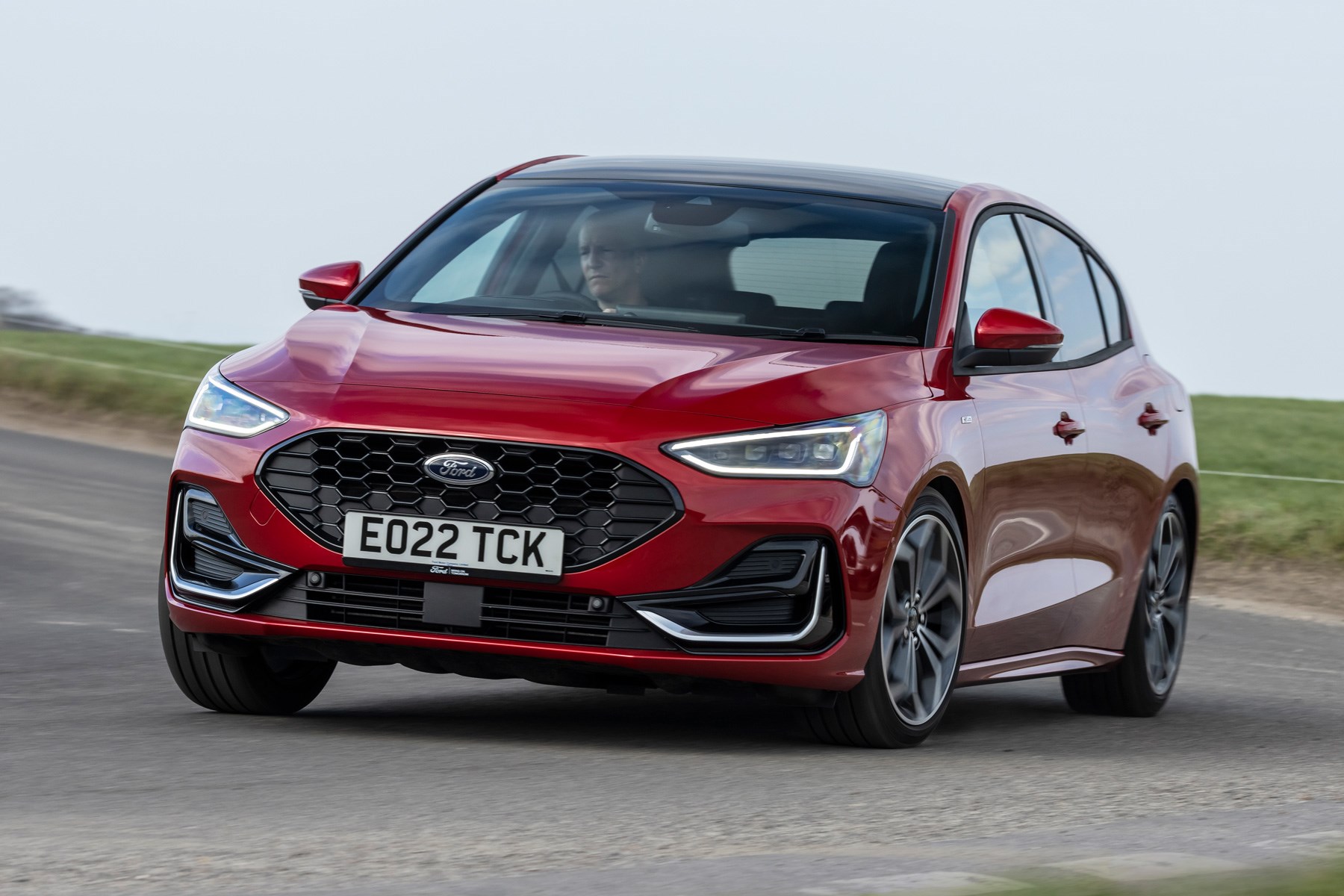
If you’re a keen driver, we suggest you avoid the cheapest Trend model and go for the ST-Line, as that comes with multi-link rear suspension. Entry-level cars feature a torsion beam rear end, which produces a jittery ride at motorway speeds and poorer body control.
What if I want my hatchback to look more… rugged?
Well, like a lot of manufacturers these days (Dacia, Skoda, Audi and Volvo to name a few), Ford offers an SUV-ified version of its family hatchback, called the Focus Active. It features lifted suspension, black plastic body cladding and a slightly higher driving position.
The average SUV buyer holds these qualities in high esteem – and Ford has done a good job of integrating the changes into the Focus’s chassis. The taller suspension means you can take speed bumps much faster than you can in the standard Focus, and there’s enough ground clearance to allow for some light off-roading.
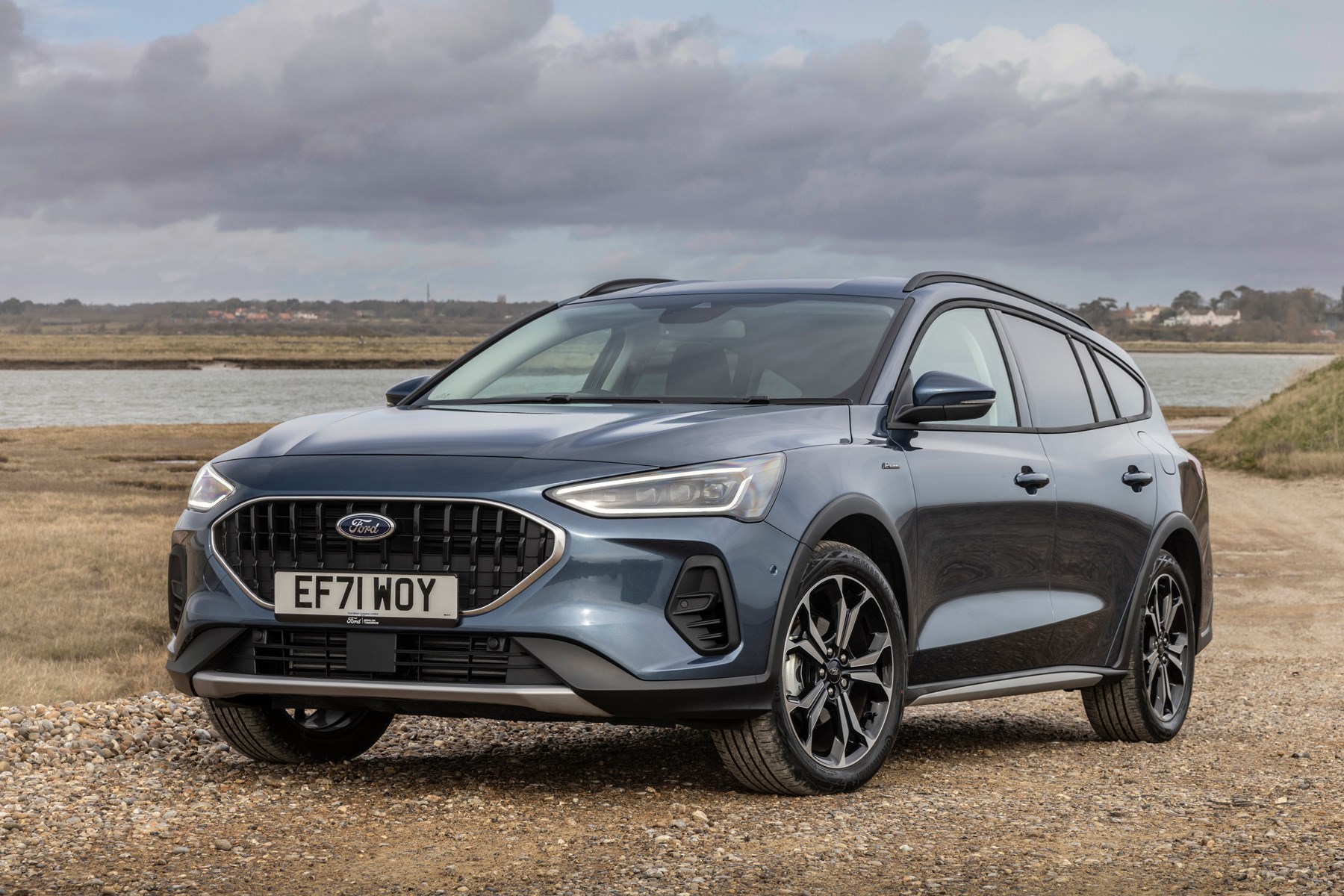
There are some drawbacks, though. As you would expect, the body lift has negatively impacted the handling, producing a lot more body roll in the corners. Despite the softer damping and extra suspension travel, the Active also isn’t quite as comfortable as the standard Focus, as the shocks are more easily overwhelmed by harsh bumps.
I also struggled to get comfortable – but that’s probably my own fault for being so lanky. Nevertheless, the Active’s lowest seating position is a couple inches higher than that of the standard Focus’s to fit the car’s SUV-esque image, which meant I was constantly craning my neck to see through the windscreen.
What if I have a vehement hatred towards anything SUV-esque?
You’ve got a good head on your shoulders for starters. And you’re in luck with the Focus, too, because Ford has kept its ST-Line specification on for the facelift. The trim outfits the car with some of the sporty trinkets you get on the Focus ST hot hatchback, which makes it drive a little sharper and adds a bit of kerb appeal.
On top of the aforementioned facelift updates, you get lowered suspension, 17-inch alloy wheels, a racy body kit, a spoiler for the tailgate, bucket seats, a sports steering wheel and a slightly noisier twin-tip exhaust system. Got all that? Good.
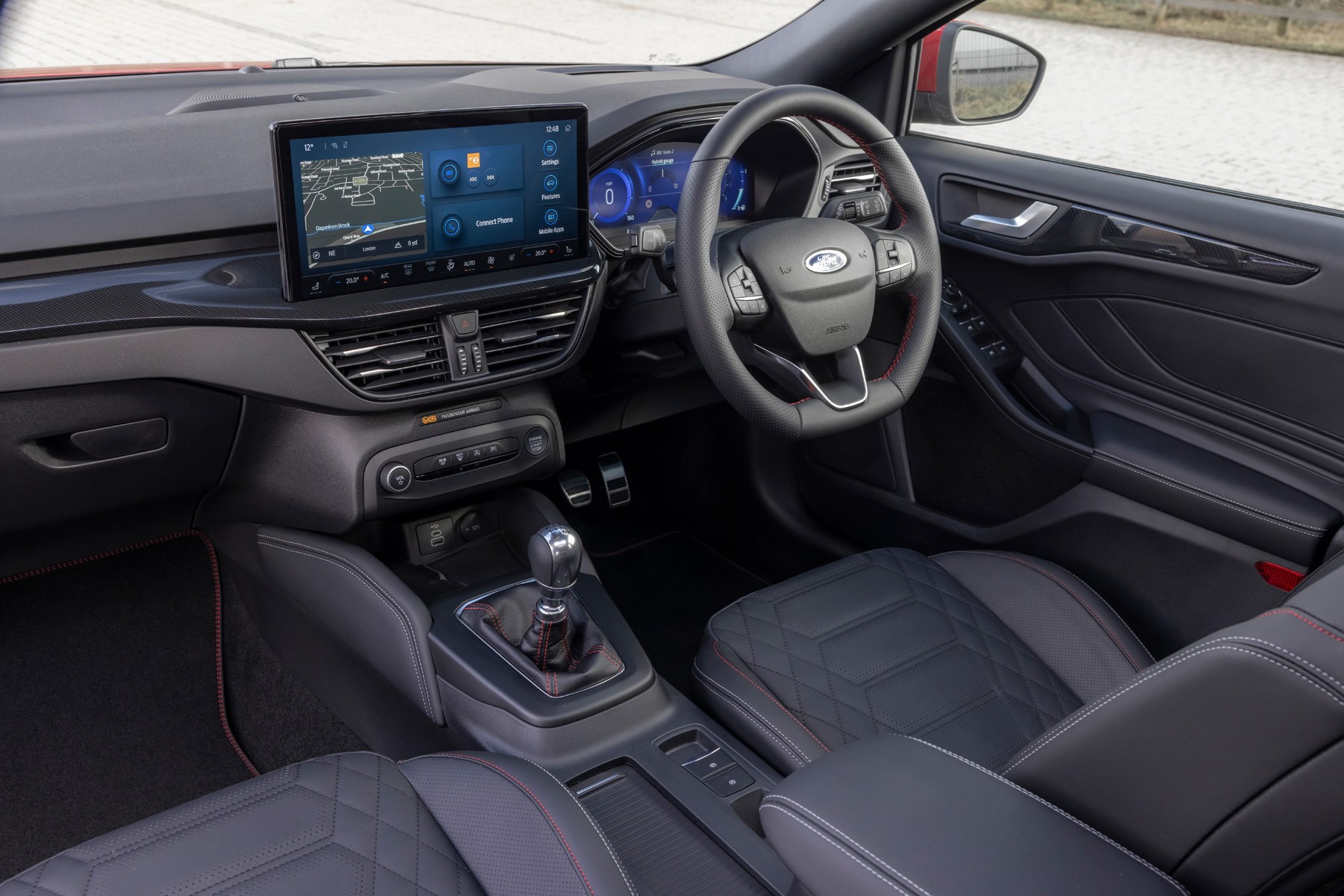
The sporty suspension offers better body control and quite a bit more grip than the standard Focus – and the firm damping means it’s great fun on a short thrash down a B-road. The trade-off is the harsher ride can get tiresome on the motorway.
Anything else I should know about?
The cabin is worlds apart from the previous version of the Focus – now, the quality stands up to the Volkswagen Golf and the Mazda 3. You’ll need to dig deep into the footwells before you find any cheap-feeling materials and overall refinement is good. There’s not a lot of wind noise at speed, either, even with the optional sunroof equipped.
Boot space isn’t quite as generous as other cars in this class, such as the Hyundai i30 and Skoda Octavia. The standard Ford Focus hatchback has 375 litres of space, although this figure swells to 1,354 litres with the rear seats folded flat. The estate offers 608 litres of space.
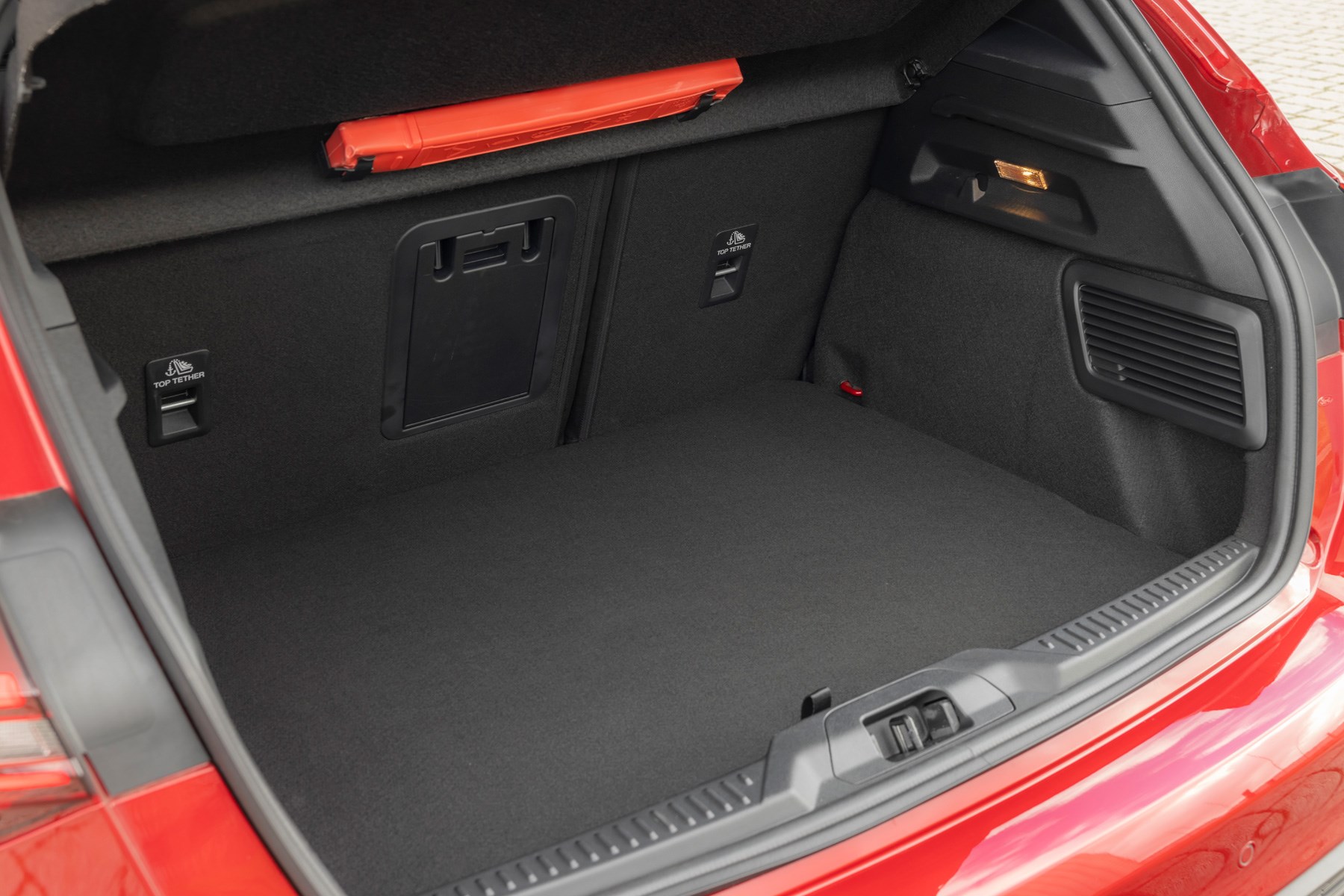
The cheapest Focus Trend is reasonably good value, too. Prices start from £23,500, which makes it almost £2,000 less expensive than the entry-level Volkswagen Golf Life. Prices for the slightly better equipped Titanium model start from £24,750, while ST-Line and Active variants are both priced from £25,580.
Verdict
All of the changes made to the facelifted version of the Ford Focus are welcome – especially the excellent new 13.2-inch infotainment system. However, rivals are starting to leave the Focus in the dust on the electrification front. Ford still doesn’t have a full hybrid or plug-in hybrid offering in the Focus’s line-up, which could force those buyers chasing low company car tax rates to look elsewhere.
Despite this, the Focus is still a great all-rounder. It handles well, there’s plenty of space in the cabin for passengers and its turbocharged petrol engines offer a decent amount of grunt. And, if you’re chasing something a bit quicker than the standard Focus, you can always opt for the 276bhp Focus ST hot hatchback.
